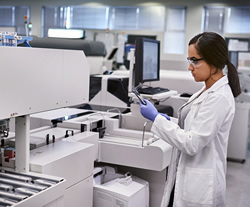 A performance audit into the Australian Taxation Office (ATO), Industry Innovation and Science Australia (IISA) and the Department of Industry, Science, Energy and Resources’ (Industry) administration of the Research and Development Tax Incentive (R&DTI) has found that while the Agencies were largely effective, there were weaknesses in joint compliance approaches.
A performance audit into the Australian Taxation Office (ATO), Industry Innovation and Science Australia (IISA) and the Department of Industry, Science, Energy and Resources’ (Industry) administration of the Research and Development Tax Incentive (R&DTI) has found that while the Agencies were largely effective, there were weaknesses in joint compliance approaches.
In his Report, Administration of the Research and Development Tax Incentive, Auditor-General, Grant Hehir said the R&DTI was a tax offset available to entities which undertook Research and Development (R&D) and was Government’s key tool for encouraging additional business investment in R&D, which might not otherwise take place.
“IISA, Industry and the ATO’s administration of the R&DTI program was largely effective,” Mr Hehir said.
“IISA, Industry and the ATO were largely effective in undertaking communication, registration and claims processing activities for the Program,” he said.
“Industry was aiming to streamline processes and increase its capacity to conduct advance and overseas findings, with the aim of reducing timeframes and costs.”
Mr Hehir said weaknesses were identified in the ATO’s processes in withholding taxpayer refunds for verification.
“While communication approaches had improved since July 2017, the Agencies had not assessed the effectiveness of their communication,” he said.
“Industry had a partly effective approach to compliance as its approach was not clearly aligned with compliance risks and its examination processes did not meet timeframe targets and did not always result in an outcome.”
The Auditor-General said the ATO had a largely effective approach to compliance, however, its monitoring and reporting on R&DTI compliance was not commensurate with risk and “there were also weaknesses in the joint approach to compliance for the Program”.
He said IISA, Industry and the ATO had largely effective performance monitoring, reporting and evaluation arrangements.
Mr Hehir made two recommendations to IISA and Industry, aimed at improving processes around advance findings and examinations, and one recommendation to the ATO related to establishing monitoring and reporting arrangements for its compliance activities.
The Auditor-General’s Report can be viewed at this PS News link and the 77-page printable Report at this link and the Audit team was Nathan Callaway, Barbara Das, Evan Lee, Johanna Bradley, Matthew Rigter, Omer Shaikh, Stevan Serafimov, Supriya Benjamin and Peta Martyn.











